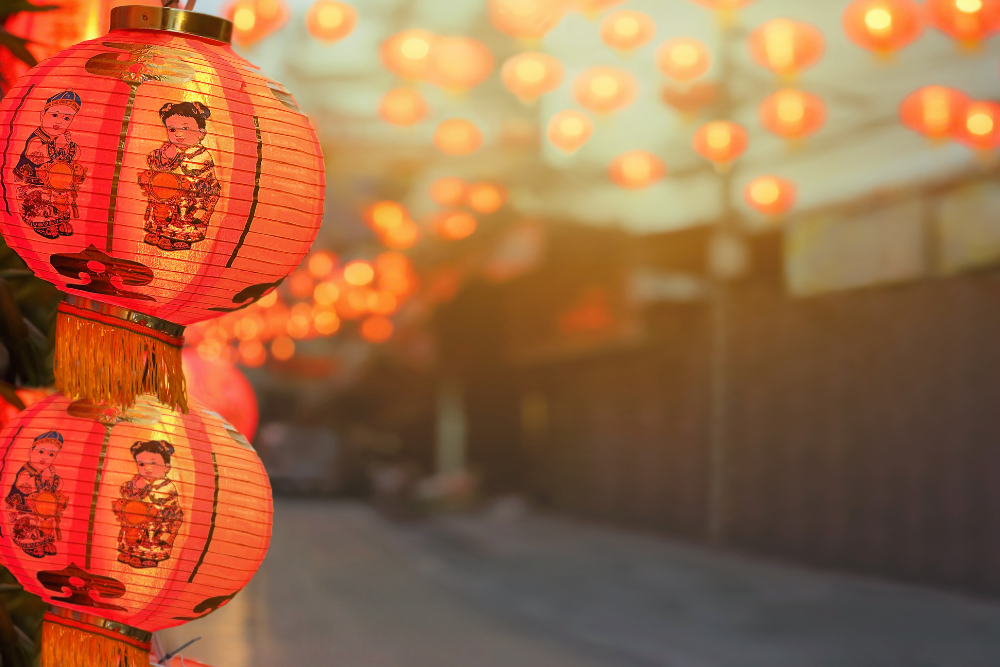Chinese New Year, or Lunar New Year, is one of the most anticipated and widely celebrated festivals in Malaysia. It marks the start of the lunar calendar, usually in late January or early February, and is a time of joy, family reunions, and abundant feasts. The festival, which lasts for 15 days, is rich in traditions, customs, and vibrant celebrations that reflect the country’s multicultural heritage. If you’re in Malaysia during Chinese New Year, you’re in for an unforgettable experience filled with exciting events, delectable foods, and a deep sense of cultural significance.
Here’s a guide on how to celebrate Chinese New Year in Malaysia and make the most of this vibrant and joyous occasion.
1. Preparing Your Home: Decorations and Cleanliness
A major part of Chinese New Year is the tradition of spring cleaning. Before the new year begins, Malaysian Chinese households take part in thorough cleaning to sweep away bad luck and make room for good fortune in the year ahead.
- Spring Cleaning: Ensure every corner of the house is cleaned to “sweep away the old” and to start fresh. It’s believed that by doing so, you rid yourself of misfortune and invite good luck.
- Decorating with Red: Red is considered a color of prosperity, happiness, and good fortune. Homes are typically adorned with red decorations such as lanterns, couplets, and koi fish. Some also display images of mythical creatures like the dragon and phoenix, symbols of good luck and harmony.
- Placing Oranges: Oranges are widely associated with good luck in Chinese culture. Families place bowls of oranges or tangerines around their homes, as the word for “orange” (chen or cheng) sounds like “wealth.”
2. Reunion Dinner: A Feast for the Family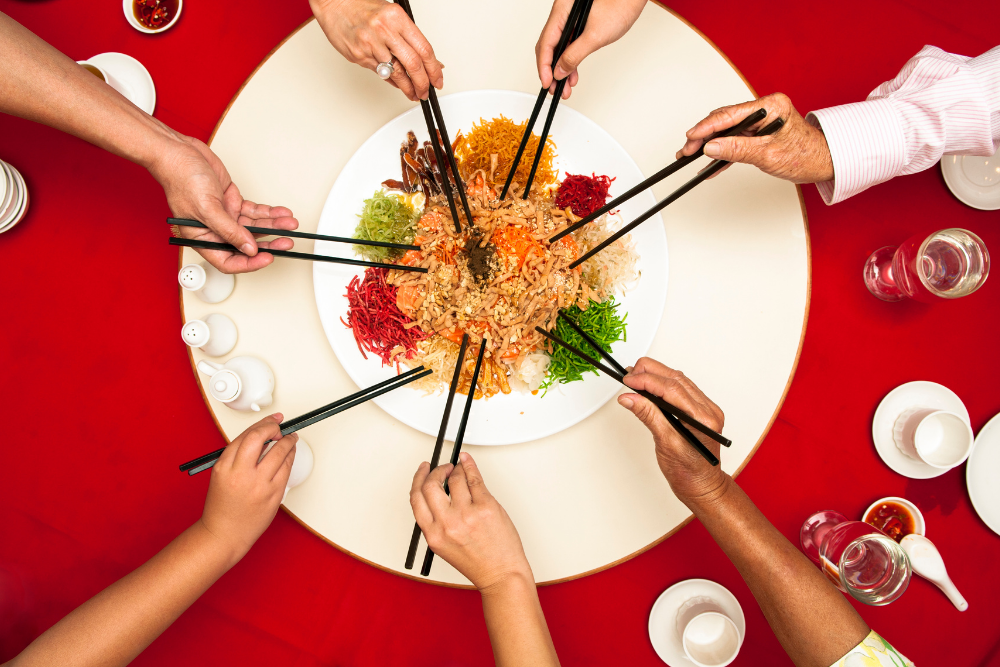
The Reunion Dinner held on the eve of Chinese New Year is the most important meal of the year. It’s a time for family members, no matter how far away, to return home and share a special dinner. This is a time to honor family bonds and celebrate togetherness.
- Traditional Dishes: Some key dishes often served during the reunion dinner include steamed fish (for prosperity), dumplings (representing wealth), spring rolls (symbolizing wealth and gold), niangao (sticky rice cake for progress and growth), and chicken (symbolizing family unity). Each dish has its own symbolic meaning, representing wishes for success, happiness, and health in the year to come.
- Hot Pot: Another common feature of the reunion dinner is hot pot, where family members sit around a bubbling pot of broth and cook meat, vegetables, and noodles together. This communal meal promotes togetherness and is a perfect way to bond.
3. Red Packets (Ang Pau) and Gift-Giving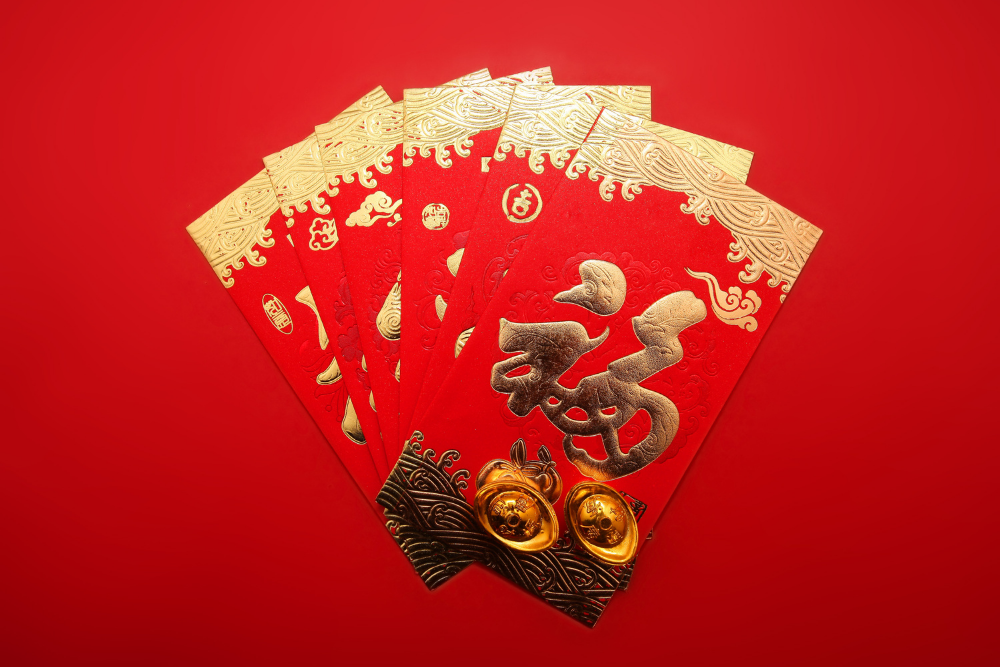
One of the most exciting traditions for children and unmarried adults during Chinese New Year is receiving red packets (ang pau), which contain money. The red color symbolizes good luck, and the act of giving ang pau is a gesture of bestowing blessings and prosperity.
- How It Works: Married couples, elders, or employers typically give these red packets to children, younger relatives, and unmarried adults. The amount of money placed inside should always be an even number, as odd numbers are associated with funerals. However, the amount should never be a multiple of 4, as the number 4 is considered unlucky (it sounds like the word for death).
- Gift-Giving: Aside from ang pau, it’s also common to give small gifts to family members, neighbors, or friends. These could include items like traditional cookies, tea, or even new clothes—symbols of a fresh start in the new year.
4. Visiting Relatives and Friends
During Chinese New Year, visiting family members and friends is a key part of the celebration. The tradition of visiting relatives and exchanging good wishes is part of the spirit of renewal and strengthening relationships.
- First Day of Chinese New Year: On the first day of the festival, people typically visit their elders to pay respects and seek blessings. It is customary to greet loved ones with phrases like “Gong Xi Fa Cai” (wishing you wealth) or “Xin Nian Kuai Le” (happy new year).
- Open Houses: One of the unique features of Chinese New Year in Malaysia is the open house tradition. Many families open their doors to guests, offering food and drinks and sharing the festivities with friends and neighbors. This inclusivity reflects Malaysia’s multicultural spirit, as people of all races and religions join in the celebrations.
5. Lion and Dragon Dances
The lion dance and dragon dance are a quintessential part of Chinese New Year celebrations in Malaysia. These vibrant performances are believed to bring good fortune and drive away evil spirits.
- Lion Dance: Performers wearing lion costumes, often accompanied by loud drumming, cymbals, and gongs, perform acrobatic movements to mimic a lion. This dance is commonly seen at shopping malls, restaurants, and on the streets, with the lion “visiting” shops to bring good fortune. In return, businesses will offer ang pau to the performers.
- Dragon Dance: The dragon dance involves a large dragon made of fabric, carried by a team of dancers who make the dragon move in a serpentine fashion. The dragon is considered a symbol of strength, power, and good luck, and it’s believed that its movements can help bring prosperity and harmony.
Both dances are a spectacle to behold, with their energetic performances and dazzling colors, filling the streets with excitement.
6. Fireworks and Firecrackers
No Chinese New Year celebration is complete without fireworks and firecrackers. The loud sounds of fireworks and firecrackers are believed to drive away evil spirits and bring in the new year with a bang.
- Fireworks Displays: In major cities like Kuala Lumpur, Penang, and Melaka, public fireworks displays light up the night sky, signaling the arrival of the new year. These celebrations are often accompanied by performances, food stalls, and community events.
- Firecrackers: Historically, firecrackers were set off in Chinese communities to scare away the mythical monster Nian, who was afraid of loud noises. Today, although firecrackers are banned in many areas due to safety concerns, the tradition continues in certain neighborhoods and during private celebrations.
7. Visiting Temples and Offering Prayers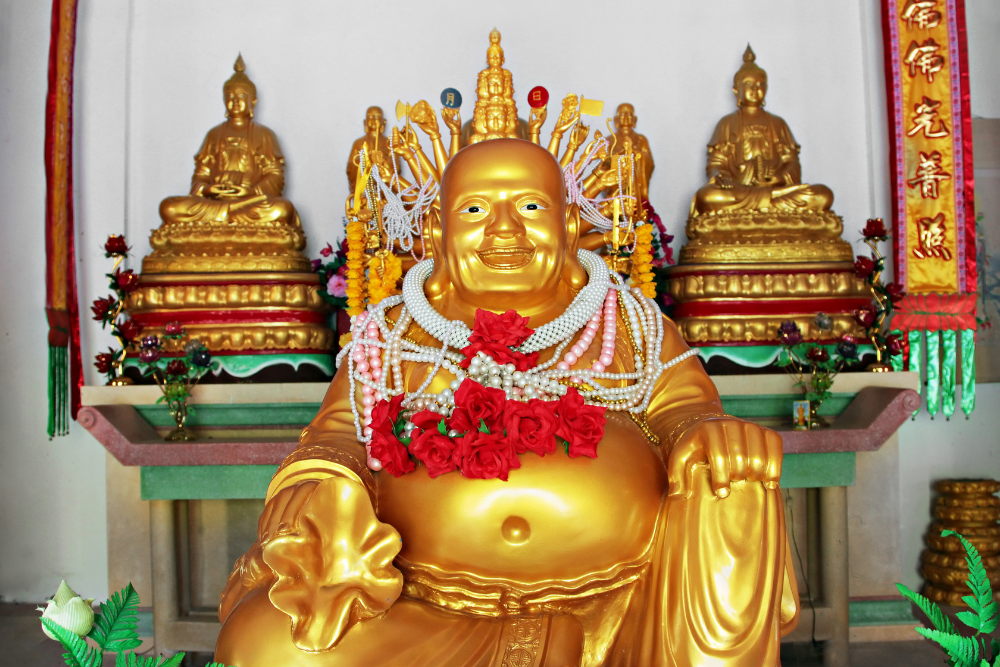
For many, Chinese New Year is a deeply spiritual time, and many Malaysians visit temples to pray for good fortune and blessings in the coming year.
- Kuan Yin Temple and Thean Hou Temple in Kuala Lumpur, as well as temples in Penang and Melaka, attract large crowds during Chinese New Year. People light incense, offer prayers, and make offerings to deities like Guan Yin (the Goddess of Mercy), Huat Tu (the God of Wealth), and others.
- Prayers for Prosperity and Health: Offerings of fruits, flowers, and even symbolic items like oranges and incense are made to ensure prosperity, health, and good luck for the year ahead.
8. Traditional Chinese New Year Foods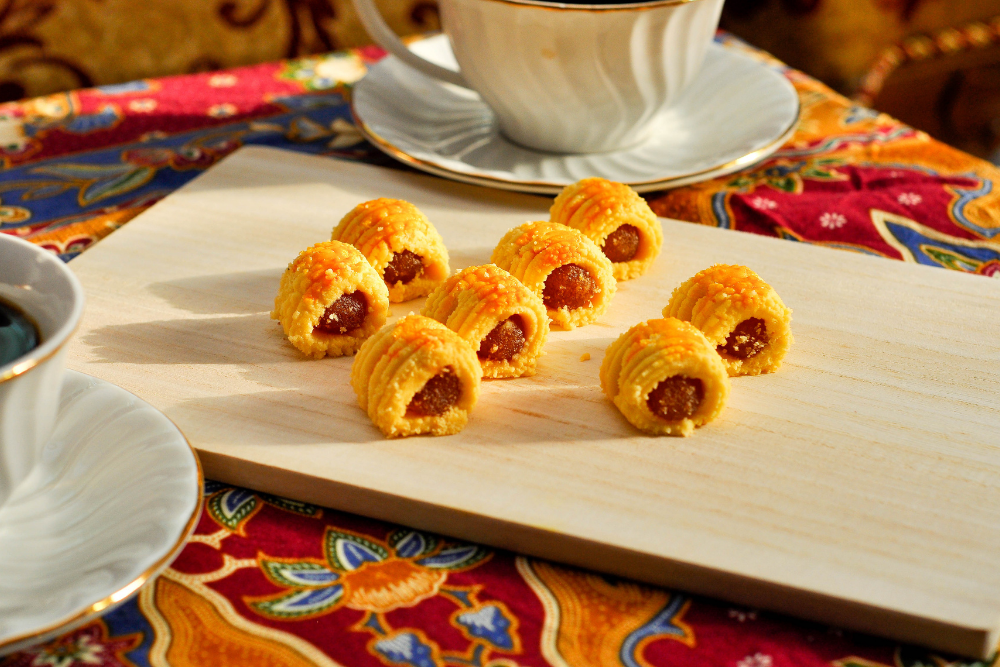
Food plays a significant role in Chinese New Year celebrations, and Malaysia is home to a rich array of traditional dishes that take center stage during this festive period.
- Tangerines: These small, sweet fruits are not only a common decoration but also symbolize wealth and good fortune. They’re often given as gifts to friends and relatives during the festival.
- Pineapple Tarts: A popular snack during Chinese New Year, these buttery and tangy treats symbolize wealth and prosperity because the word for pineapple in Hokkien sounds like “prosperity comes.”
- Kuih Bahulu: These small sponge cakes are often served during Chinese New Year and are a nostalgic treat that dates back to the Peranakan community.
- Yee Sang: A must-try during the New Year’s Eve or New Year’s Day feast, yee sang (or prosperity salad) is a dish made of thinly sliced raw fish, shredded vegetables, and a sweet sauce. Family and friends gather to toss the salad while shouting good wishes for the new year. The higher the toss, the greater the prosperity!
9. The Lantern Festival (Chap Goh Mei)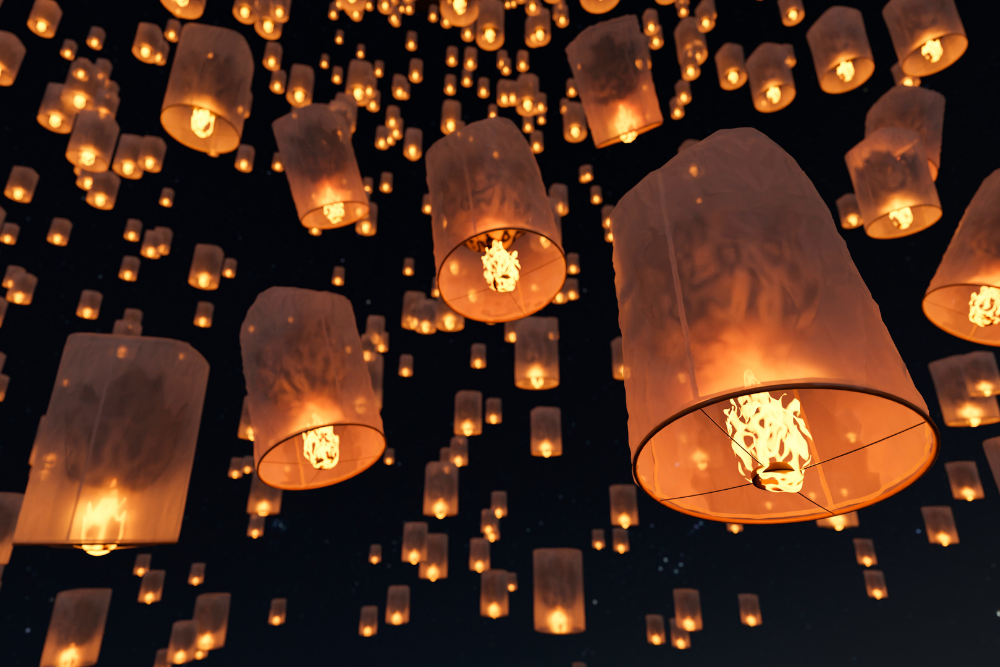
The Chinese New Year celebrations culminate with the Lantern Festival on the 15th day of the festival. This is a time to light lanterns, eat sweet glutinous rice balls (tang yuan), and bid farewell to the New Year.
- Lantern Displays: Beautiful lantern displays can be seen at parks, temples, and streets during the Lantern Festival, creating a magical atmosphere.
- Tang Yuan: Sweet glutinous rice balls are typically served during Chap Goh Mei to symbolize family unity and harmony.
Conclusion
Celebrating Chinese New Year in Malaysia is a joyous and vibrant affair, filled with cultural customs, delicious food, and a sense of togetherness. Whether you’re participating in family reunions, watching lion dances, or simply indulging in the traditional dishes, the festival offers a unique opportunity to experience the rich cultural heritage of Malaysia. So, whether you’re a local or a visitor, joining in the festivities during Chinese New Year will surely be an unforgettable experience!



